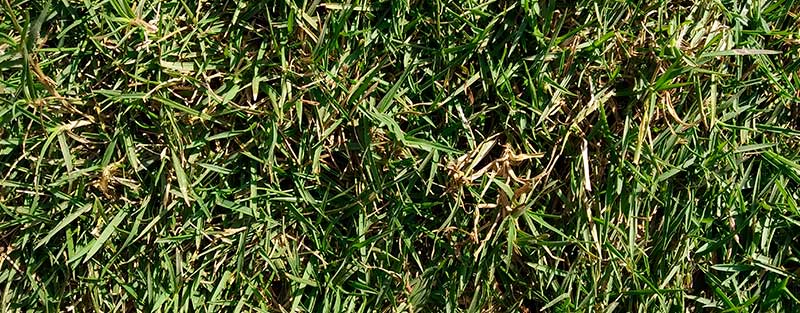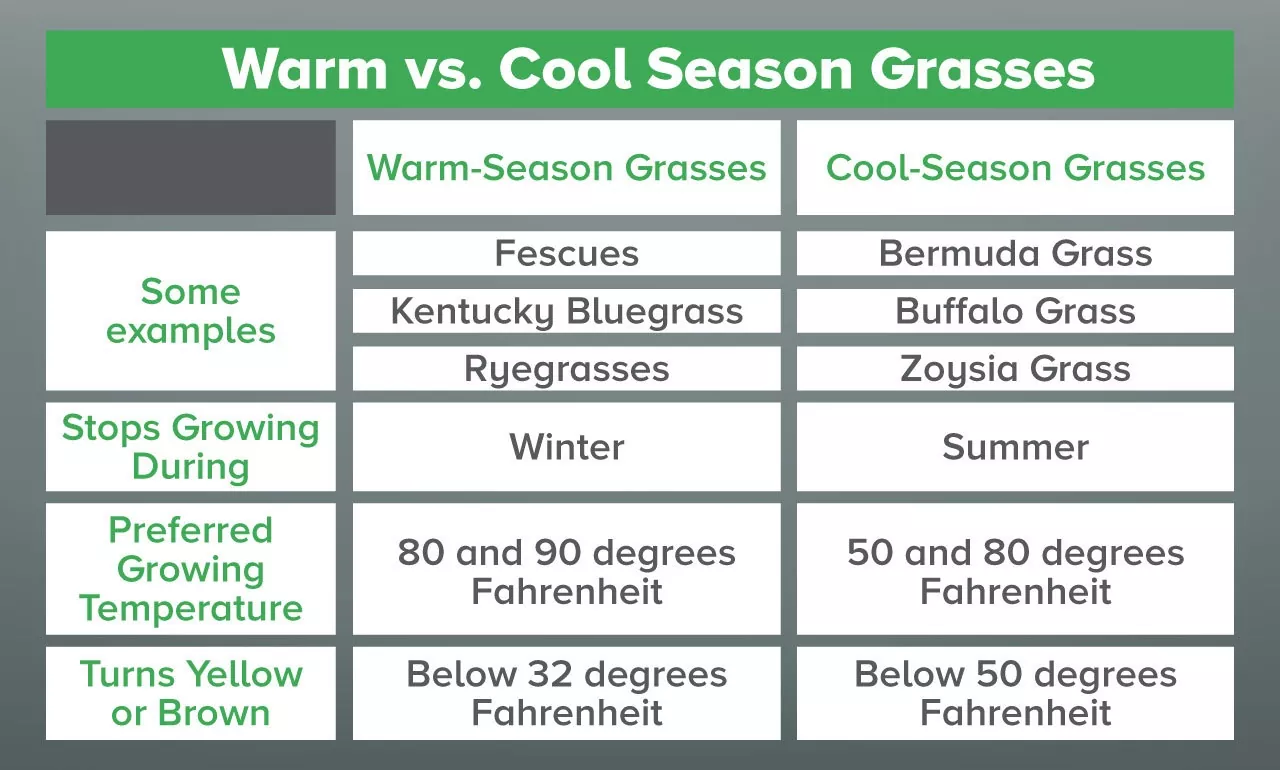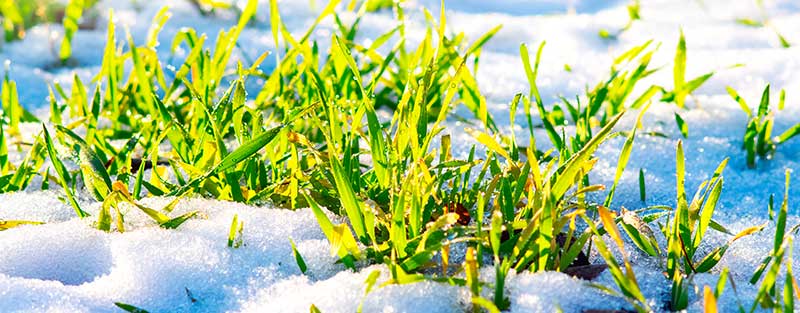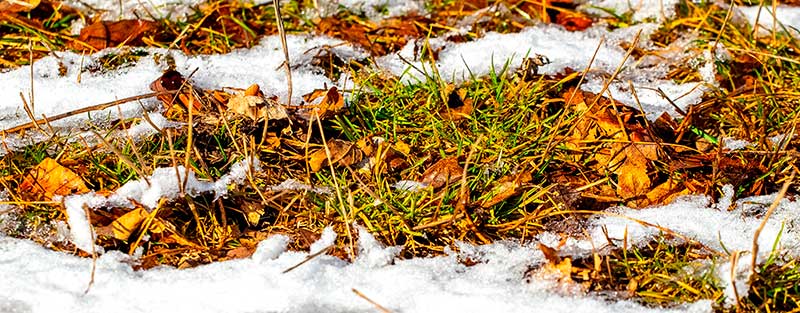
When Does Grass Stop Growing? Learn if It Is During Winter or Summer!
- 08, Oct 2020
- J&R Chavez Landscaping LLC
There comes a time during the year when you probably want to put away the lawn mower. For some people, this is during the winter as they don’t want to be outside in the cold. If you’ve ever wondered when does grass stop growing, then you must read this blog!
Depending on the season, you know how your lawn behaves. In the spring, you have to do lawn mowing at least once every one or two weeks. But, during the winter, all of a sudden, you stop cutting the grass. This is because grass stops growing at some point before or during the winter months.
If you didn’t know that grass stops growing at one point during the year, then this blog will also be beneficial for you! We’ll discuss several factors that affect grass growth as well as when is time to stop cutting.
Want to Know When Does Grass Stop Growing?

When we talk about grass not growing, we’re not saying that it is dead. It is simply stopping its growth for a while. Although it may seem that your grass is dead, don’t be quick to start planting new grass seeds. Just wait for spring and you’ll see how your grass continues to grow.
Grass grows when it gets all the nutrients it needs, as well as sunlight, heat, and water. If your grass is not getting what it needs to thrive, then that is when you notice it has stopped growing.
The answer to when does grass stop growing depends on several factors. It will vary depending on the type of grass, such as cool or warm-season grasses. Also, it depends on the air and soil temperature, dormancy, or if the grass is adapting.
Let’s look at each factor in more detail!
Type of Grass

For some people, this may come as a surprise as they did not know that there are different types of grasses. But, this is an important factor as the type will determine if grass growth stops in the winter or summer. And yes, grass can stop growing in the summer as well!
There are two types of grasses, cool-season grasses and warm-season grasses. So, this is the first step to figure out when you won’t be needing your lawn mower anymore.
Cool-season grasses stop their growth in the summer but continue to grow in the winter months. These include:
- Fescues
- Kentucky Bluegrass
- Ryegrasses
These types of grasses will start growing in October or November. But, once the hot summer begins, they will go into dormancy.
On the other hand, warm-season grasses grow in the summer but in the winter they’ll go into dormancy. These species include:
- Bermuda Grass
- Buffalo Grass
- Zoysia Grass
These grasses love the hot summer days, but they need enough water to keep thriving. Their dormant state can last from September or October to March or April.
One more thing we have to talk about is the transition zone. This is an area where is hot during the summer but also really cold during the winter. There are some grass species that can thrive in their preferred climate but also in the transition zone.
Make sure you research the type of grass you have so that you know when it could potentially stop growing.
Below, you can find a table where we’ve summarized the top differences between warm and cool-season grasses.
Air and Soil Temperature
Knowing the type of grass you have is important when thinking about the air and soil temperature as well. Some grasses will stop growing when the air temperature is at 40 degrees Fahrenheit or lower. But, other types will stop their growth if the air temperature is over 90 degrees.
For cool-season grasses, the preferred growing temperate is between 50 and 80 degrees Fahrenheit. They can remain green even if the temperature falls below 50 degrees. But, it will stop its growth if the temperature drops below 32 degrees for an extended amount of time.
Warm-season grasses will thrive between 80 and 95 degrees Fahrenheit. They will start to take a brown or yellow tone if the temperature drops below 50 degrees and stays that way for an extended period.
However, it’s essential that you consider the soil temperature as well. The soil will not instantly adjust to the changing temperature as the air. So, what does this mean? Don’t expect your warm-season grass to stop growing as soon as the air temperature hits 50 degrees. Give it a couple of days until the soil temperature adjusts.
This is also true when you’re waiting for your grass to start growing again. Even though you feel warmer air outside, your lawn’s soil could still be cool which is why your grass has not started growing.
Grass Stops Growing While It’s Dormant

This leads us to grass dormancy. As we mentioned before, grass is dormant when it doesn’t get everything it needs to grow. But, be sure to not mistake this for dead grass. They may look alike but it will all depend on the type of grass.
If a cool-season grass is experiencing extreme heat and drought, then it will enter a state of dormancy. For that reason, we recommend giving your lawn the amount of water it needs to stay healthy.
Knowing the type of grass you own comes in handy when the grass starts turning yellow or brown. This is because you’ll know if your grass is dead or just in a dormant state when it starts to lose its green color.
Grass Is Adapting
Finally, grass can adapt to new environments. When this happens, it also stops growing. You need to be able to figure out if your grass is adapting to a new environment before you decide it’s dead.
Your grass will revive itself after it is done adapting to its new environment. You just make sure to give it proper lawn care so that it continues to thrive healthily.
Now you know all the facts that answer the question when does grass stop growing! Get to know your lawn so that you know how to take care of it. Make sure to take all of these facts into consideration before doing anything that could damage your lawn.
